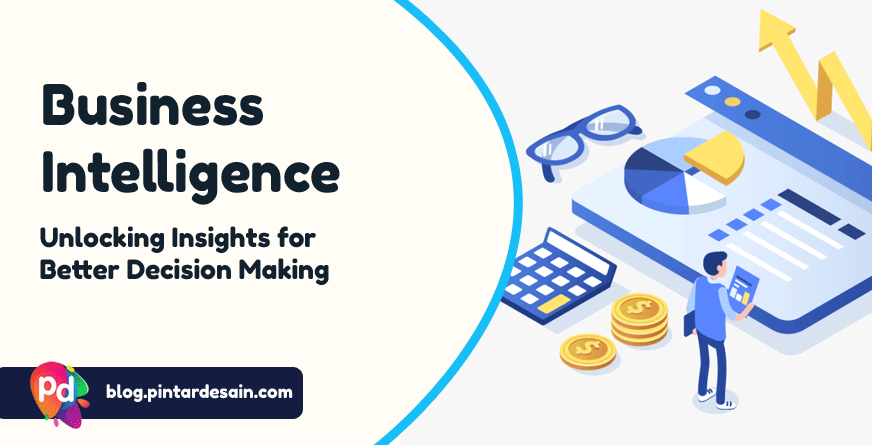The mortgage industry is one of the most competitive and dynamic sectors in the financial services landscape. With constantly changing regulatory frameworks, evolving customer needs, and market fluctuations, mortgage lenders need to stay agile and proactive to survive and thrive.
In this context, Mortgage Business Intelligence (MBI) has emerged as a game-changing tool for lenders to gain strategic insights and make informed decisions. MBI leverages advanced analytics, data visualization, and predictive modeling techniques to transform raw data into actionable insights, enabling lenders to optimize their operations, manage risks, and enhance customer experience.

Here are some of the key benefits of Mortgage Business Intelligence:
- Improved Operational Efficiency:
MBI enables lenders to track and measure key performance indicators (KPIs) such as loan processing time, application volume, and loan-to-value ratios. By analyzing these metrics, lenders can identify bottlenecks, streamline processes, and reduce costs. For example, MBI can help lenders identify which loan officers have the highest closing ratios, which loan products have the highest demand, and which stages of the loan process are taking the longest time. - Enhanced Risk Management:
MBI can help lenders monitor and manage risk by providing real-time alerts and reports on potential fraud, default, and delinquency. By leveraging predictive modeling techniques, MBI can also identify high-risk borrowers and proactively manage their accounts to reduce the likelihood of default. For example, MBI can flag borrowers who have a history of late payments, have high debt-to-income ratios, or have a low credit score. - Improved Customer Experience:
MBI can help lenders personalize their services and tailor their products to meet the unique needs of each borrower. By analyzing customer data such as demographics, income, and credit history, MBI can provide lenders with insights on how to improve their products and services. For example, MBI can help lenders identify which borrowers are more likely to refinance, which borrowers are more likely to default, and which borrowers are more likely to be satisfied with their mortgage experience. - Competitive Advantage:
MBI can provide lenders with a competitive advantage by enabling them to make data-driven decisions faster than their peers. By leveraging real-time data and predictive modeling, lenders can quickly respond to changing market conditions and customer needs. For example, MBI can help lenders identify which geographic markets have the highest demand for mortgage products, which loan products are gaining popularity, and which marketing channels are the most effective.
Business Intelligence Software for Mortgage Lenders: Leveraging Data for Strategic Insights
In the fast-paced and ever-changing world of mortgage lending, data is becoming more crucial than ever. With the increasing competition and regulatory pressures, mortgage lenders need to leverage data to gain strategic insights and make informed decisions. This is where Business Intelligence (BI) software for mortgage lenders comes in. BI software enables lenders to transform raw data into actionable insights, empowering them to optimize their operations, mitigate risks, and enhance customer experience.
Here are some of the key features and benefits of Business Intelligence software for mortgage lenders:
- Data Integration:
BI software can integrate data from various sources, such as loan origination systems, servicing platforms, credit bureaus, and market data providers. This enables lenders to have a comprehensive view of their operations, customers, and market trends. By consolidating data into a single source of truth, BI software eliminates data silos and improves data accuracy. - Data Visualization:
BI software can present data in a visual and intuitive manner, such as charts, graphs, and dashboards. This makes it easier for lenders to identify patterns, trends, and outliers, and to communicate insights to stakeholders. With data visualization, lenders can quickly spot issues and opportunities and make data-driven decisions. - Predictive Analytics:
BI software can leverage predictive modeling techniques to forecast future outcomes, such as loan performance, default rates, and customer satisfaction. This enables lenders to proactively manage risks, optimize pricing and product offerings, and enhance customer experience. By anticipating future trends and scenarios, lenders can stay ahead of the competition and adapt to changing market conditions. - Self-Service Analytics:
BI software can empower lenders to explore and analyze data on their own, without relying on IT or data analysts. This enables lenders to be more agile and responsive to emerging issues and opportunities. With self-service analytics, lenders can drill down into data, create ad hoc reports, and ask new questions, without waiting for a data request to be fulfilled. - Compliance Management:
BI software can help lenders monitor and report on compliance with regulatory requirements, such as fair lending, anti-money laundering, and consumer protection. This enables lenders to mitigate legal and reputational risks and to demonstrate their commitment to ethical practices. With compliance management, lenders can track key performance indicators, such as loan pricing disparities, redlining risks, and consumer complaints.
In conclusion, Business Intelligence software is becoming essential for mortgage lenders to gain strategic insights and make informed decisions. By integrating data, visualizing insights, predicting outcomes, enabling self-service analytics, and managing compliance, BI software can help lenders optimize their operations, manage risks, and enhance customer experience. As the mortgage industry continues to evolve, BI software will become increasingly crucial for lenders to stay competitive and compliant.